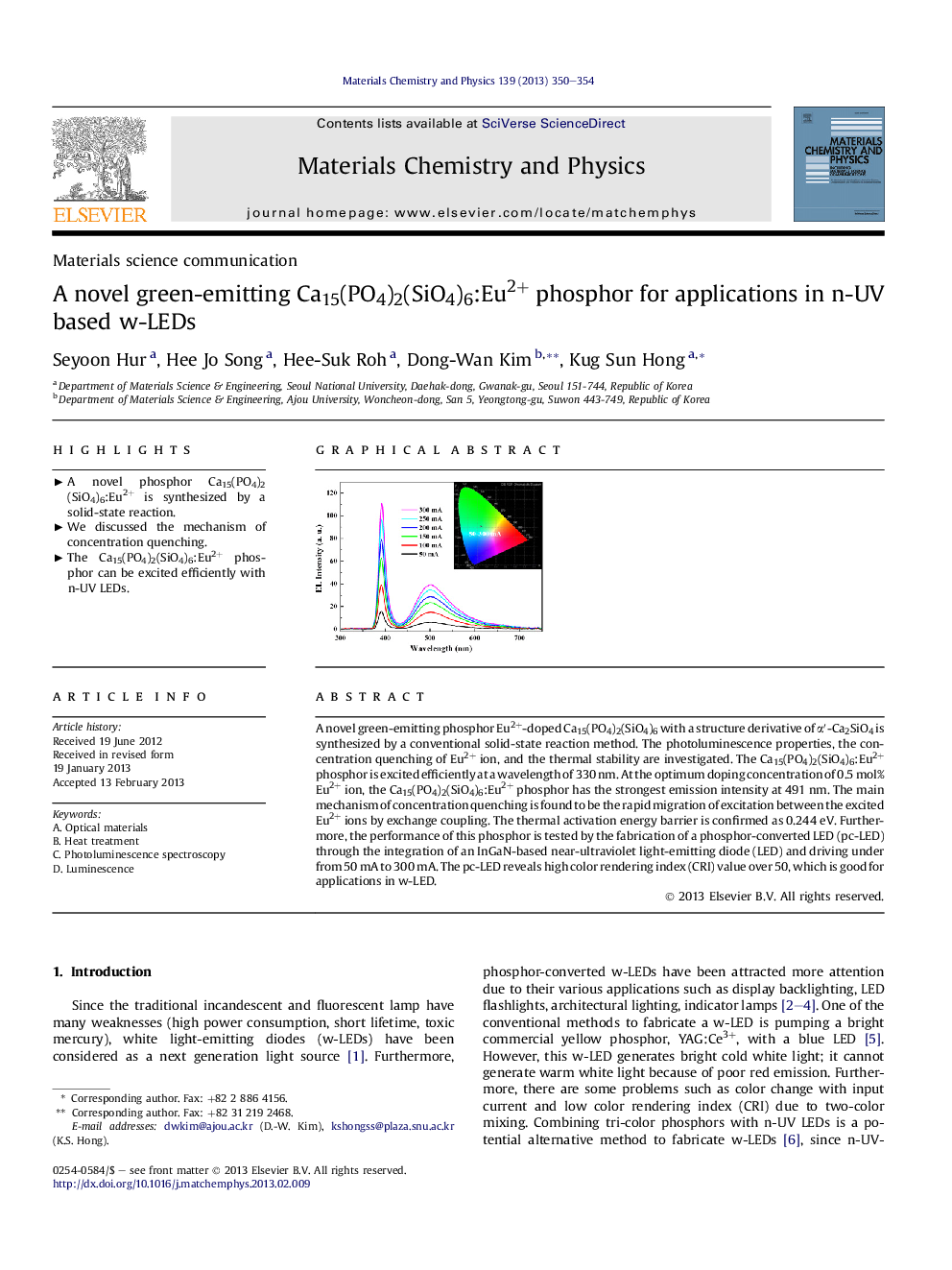| Article ID | Journal | Published Year | Pages | File Type |
|---|---|---|---|---|
| 1522711 | Materials Chemistry and Physics | 2013 | 5 Pages |
A novel green-emitting phosphor Eu2+-doped Ca15(PO4)2(SiO4)6 with a structure derivative of α′-Ca2SiO4 is synthesized by a conventional solid-state reaction method. The photoluminescence properties, the concentration quenching of Eu2+ ion, and the thermal stability are investigated. The Ca15(PO4)2(SiO4)6:Eu2+ phosphor is excited efficiently at a wavelength of 330 nm. At the optimum doping concentration of 0.5 mol% Eu2+ ion, the Ca15(PO4)2(SiO4)6:Eu2+ phosphor has the strongest emission intensity at 491 nm. The main mechanism of concentration quenching is found to be the rapid migration of excitation between the excited Eu2+ ions by exchange coupling. The thermal activation energy barrier is confirmed as 0.244 eV. Furthermore, the performance of this phosphor is tested by the fabrication of a phosphor-converted LED (pc-LED) through the integration of an InGaN-based near-ultraviolet light-emitting diode (LED) and driving under from 50 mA to 300 mA. The pc-LED reveals high color rendering index (CRI) value over 50, which is good for applications in w-LED.
Graphical abstractFigure optionsDownload full-size imageDownload as PowerPoint slideHighlights► A novel phosphor Ca15(PO4)2(SiO4)6:Eu2+ is synthesized by a solid-state reaction. ► We discussed the mechanism of concentration quenching. ► The Ca15(PO4)2(SiO4)6:Eu2+ phosphor can be excited efficiently with n-UV LEDs.
